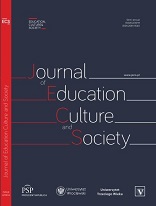Learning in late adulthood in the light of biographical research
Learning in late adulthood in the light of biographical research
Author(s): Aleksandra Marcinkiewicz-WilkSubject(s): Education, Adult Education, Inclusive Education / Inclusion
Published by: Fundacja Pro Scientia Publica
Keywords: older people;learning in older age;education;adult education;non-formaln education;informal education
Summary/Abstract: Aim. The paper presents the result of research how people study in older age. Method. The method of biographical research was used. The research presented was embedded in the strand of qualitative research in an interpretative paradigm, in which cognitive science places emphasis on the subject who is learning. In recruiting subjects for research intentional selection was used, based on the typical cases method. One of the basic criteria for selection of candidates was an intention to undertake educational activity. In effect, 12 people participated in my research – 8 women and 4 men. Results. In the biographies analysed, education proceeds in both non-formal and informal areas, so both these area merge with each other and complement each other. The return line of education in late adulthood is characteristic for those biographies in which learning occurs above all in the area of non-formal education. These seniors usually undertake learning in institutions with an educational character which are aimed at that age group, such as the University of the Third Age, Seniors’ Academy, or various kinds of EU training whose beneficiaries are older people. On the other hand, those whose biographies take the form of continued education in late adulthood realise their goals most effectively in informal education. In this area, the most frequent form of activity is self-education. This is undertaken by those who have a previous knowledge of the subject, but were unable to dedicate themselves to it fully because of their professional work.
Journal: The Journal of Education, Culture, and Society
- Issue Year: 11/2020
- Issue No: 2
- Page Range: 133-146
- Page Count: 14
- Language: English

